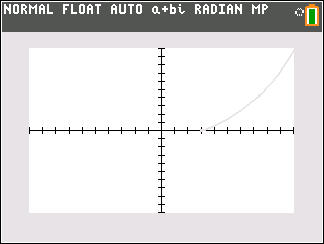HP 32S II Statistical Formulas
Statistics Formulas
The 32S II can store formulas for evaluations, including formulas involving stat variables.
Covariance:
C = r × sx × sy
Root Mean Square Based on X Variable Statistics:
R = SQRT( Σx^2 ÷ n )
Z-Score Based on X Variable Statistics:
Z = (X - x-bar) ÷ sx
Accessing Stat variables:
r: [ right shift ] [ LN ] (L.R.) [ y^x ] (r)
sx: [ right shift ] [ 1/x ] (s, σ), [ √x ] (sx)
sy: [ right shift ] [ 1/x ] (s, σ), [ LN ] (sy)
Σx^2: [ right shift ] [ Σ+ ] (SUMS) [ e^x ] (x)
n: [ right shift ] [ Σ+ ] (SUMS) [ √x ] (n)
x-bar: [ right shift ] [ y^x ] (x-bar,y-bar) [ √x ] (x-bar)
Example
Data: (x, y)
(10.4, 20)
(13.5, 18)
(16.8, 15)
(19.1, 13.9)
Enter statistical data: y [ENTER] x [ Σ+ ]
Some stats:
x-bar = 14.95
y-bar = 16.725
r = -9.9503133E-1
Covariance: Solve for C
C = -10.555
Result is stored in C
Root Mean Square: Solve for R
R = 15.3089842903
Result is stored in R
Z-Score Based on X Variable Statistics: Solve for Z
X? 15, Z = 1.31382E-2
X? 17, Z = 5.38666E-1
Result is stored in Z
Formulas vs. Programs
If we are going to evaluate formulas (that is, solve for the variable left of the equals sign), we could also enter and use programs. The programs for the above three formulas:
Covariance:
C01 LBL C
C02 r
C03 sx
C04 ×
C05 sy
C06 ×
C07 RTN
Root Mean Square:
R01 LBL R
R02 Σx^2
R03 n
R04 ÷
R05 SQRT
R06 RTN
Z Score: (x is in the X stack)
Z01 LBL Z
Z02 x-bar
Z03 -
Z04 sx
Z05 ÷
Z06 RTN
Byte Consumption Comparison
Covariance
Formula: 12 bytes
Program: 10.5 bytes
Root Mean Square
Formula: 12 bytes
Program: 9 bytes
Z Score
Formula: 15 bytes
Program: 9 bytes
From sample set, programs are shorter than formulas. Is this true in general?
Eddie
All original content copyright, © 2011-2023. Edward Shore. Unauthorized use and/or unauthorized distribution for commercial purposes without express and written permission from the author is strictly prohibited. This blog entry may be distributed for noncommercial purposes, provided that full credit is given to the author.
















